Stefaan van Hooydonk, the founder of the Global Curiosity Institute, shares his reflection about "What I learned from training 15,000 people on curiosity".
It started on one of those blue Mondays in 2018. I had been thinking the entire weekend why the new company wide culture program my team and I had been launching only had limited effect.
This Monday was different, though. It marked the beginning of a new insight for me, for my team, and for the 300,000 employees in my care. This insight eventually led me to roll up my sleeves, quit my job and start the global curiosity institute.What happened?
I was the Chief Learning Officer for a wonderful company: Cognizant. I was brought in to relook at the overall learning and knowledge strategy of the company given there was a big shift in the market. The company had been relying on hiring talent to grow the expansion of the business. A new learning strategy was therefore needed: one which was predicated on both hiring new talent as well as upskilling the current workforce into these new areas. A buy + build talent strategy.
Prelude: Learning Culture Change
We launched our new learning culture to 300,000 colleagues with the slogan ‘Open, Wonder, Learn.’ Open up to your curiosity, Wonder about new possibilities. Learn everyday. The program was marketed heavily, but the expected spike in learning data did not materialize. Over the weekend, I had been reflecting on the words of our slogan. Could it be that we were assuming something that was not there? It was the latter.
How to re-train people to rekindle their curiosity?
The answer was in the word ‘curiosity’. We had assumed that because we - the organizers of this culture change - were a curious bunch, employees must be too. While some employees jumped at this new opportunity for upskilling, many did not.
A thought occurred to me. Would it be possible to change people’s habits and increase their intrinsic motivation to learn? Is it possible to rekindle people’s curiosity as if they had lots of curiosity when they were young yet that their curiosity had diminished.
What if we could train people in ‘curiosity’? I brought the idea to the team. This had not been done before. Learning and Development in the company had been focusing on training people on either primary or secondary skills. But training people in curiosity was going way beyond secondary skills. It was something much more fundamental: We had to change their habits and core beliefs about themselves.
“Let’s do a pilot and see what happens?” I suggested. We would do short virtual sessions on “‘the power of a curious mindset’, share curiosity enhancing strategies with them and invite them to reflect on their own curiosity habits. Additionally, we would encourage them to share their in-class experiences with others.
Data does not lie
Data does not lie and I have always been a fan of the power of insights from data. 3 months after these sessions, we would send a microsurvey to these attendees and ask them to rate the session and - more importantly - to tell us whether they were more (or less) willing to try out new things. What we wanted to learn was whether their view of the world had shifted. Low and behold, 39% told us the session had significantly contributed to changing their worldview, 46% said it contributed quite a bit, 10% it somehow had helped and only 4% replied that it had helped little. This looked promising.
A year later - by that time the course was quite popular and had seen 15,000 participants - we checked again the data. We compared the average training hours of this group 12 months prior to the ‘curious mindset” session and 12 months post it. Here the results were even more impressive. Their average learning hours had risen from 25 to 43 hours. We were on to something.
Lessons learned
The lessons from this program are powerful. It tells us the following:
- Permission is important. Creating and sharing a new learning culture was a very important step. It created the permission for people to show up curiously, to be open and fearless to new opportunities. What helped was that my CEO supported me in sharing with all employees that curiosity was important for both the individual as well as beneficial for the company.
- New habits follow training. Just telling people to show up curiously is not enough. It is important to train people first. Remember that many people have been conditioned not to stick out their neck and upskill themselves. Many over the years have learned not to ask too many questions, not to suggest too many new ideas, even if they could directly benefit. Some people have maintained an inquisitive mind, many however need to be guided into rekindling their natural curiosity. Once this has happened, magic happens.
Stefaan van Hooydonk is founder of the Global Curiosity Institute and author of the bestselling book: The Workplace Curiosity Manifesto. He researches workplace curiosity and consults global corporations and leadership teams towards building a stronger curiosity muscle.
Prior to setting up the Curiosity Institute, Stefaan served as Chief Learning Officer in fortune 200 companies. His last role was that of Chief Learning Officer for Cognizant, where he oversaw learning and development for over 300k associates across the globe.








